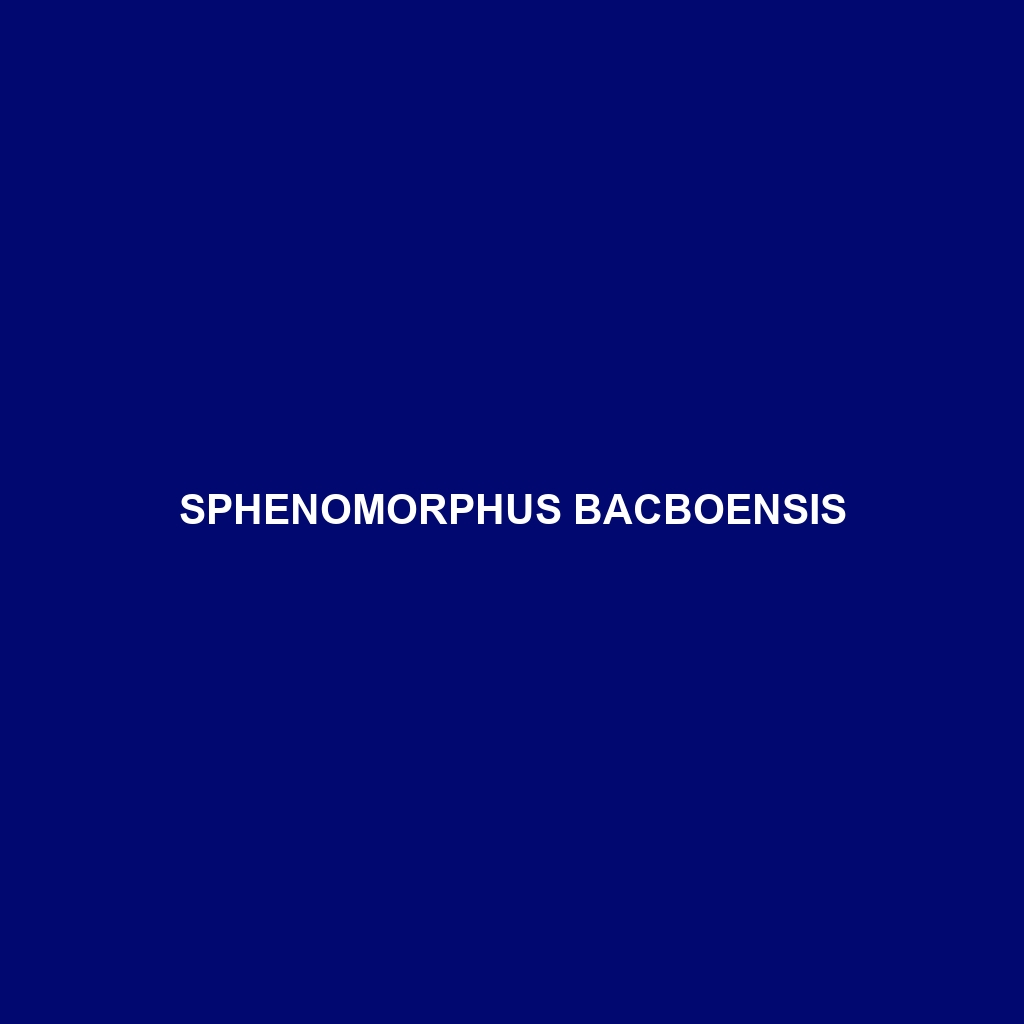Common Name
Sphenomorphus bacboensis
Scientific Name
Sphenomorphus bacboensis
Habitat
The Sphenomorphus bacboensis, commonly known as the Bac Bo skink, primarily inhabits the lush rainforests and temperate forests of Southeast Asia, particularly the northern regions of Vietnam. These habitats are characterized by high humidity, diverse flora, and a complex understory that provides ample cover and food sources for this species. Sphenomorphus bacboensis is often found in leaf litter, among fallen logs, and near moist environments, as these conditions are essential for its survival. The optimal climate for this skink includes warm temperatures and frequent rainfall, which contribute to the rich biodiversity of its ecosystem.
Physical Characteristics
Sphenomorphus bacboensis exhibits several distinctive physical traits. Typically, adults reach a length of approximately 10 to 15 centimeters, featuring a slender, elongated body that is adept for navigating through dense vegetation. The skink’s coloration varies from olive green to brown, allowing it to blend seamlessly into its forest surroundings. Its scales are smooth and shiny, an adaptation that aids in reflecting sunlight and deterring predators. Unique to this species are its brightly colored patterns on the dorsal side, which can range from light yellow to subdued red, serving both as camouflage and a visual signal to potential mates.
Behavior
Active during the daytime, Sphenomorphus bacboensis showcases a variety of behavioral adaptations. It is a ground-dwelling skink known for its quick movements and agility, using its speed to evade predators. Socially, these skinks are generally solitary, coming together primarily during the mating season. Interestingly, they exhibit seasonal migration behaviors, moving to different parts of their habitat in search of food and optimal reproductive sites. Their unique mating rituals involve elaborate displays of color and movement, which play a crucial role in attracting mates and establishing dominance.
Diet
Sphenomorphus bacboensis is classified as an insectivore, primarily feeding on a diet rich in insects, spiders, and other small invertebrates. Some individuals have also been observed consuming plant materials, indicating a slight omnivorous tendency. Feeding often occurs in the early morning or late afternoon when temperatures are moderate. The skink employs a sit-and-wait strategy, using its camouflage to ambush unsuspecting prey that ventures too close.
Reproduction
The reproductive cycle of Sphenomorphus bacboensis typically aligns with the wet season, from May to August. Males engage in vigorous courtship displays, which involve intricate body movements and color displays. After successful fertilization, the female lays a clutch of eggs in moist soil or under leaf litter, usually numbering between 4 to 12 eggs. The incubation period lasts approximately 60 to 90 days, after which the hatchlings emerge fully developed and capable of independent foraging. Maternal care is minimal, with females leaving the eggs to develop on their own.
Conservation Status
Currently, the conservation status of Sphenomorphus bacboensis is classified as vulnerable due to habitat loss driven by deforestation and human encroachment. The degradation of its rainforest habitat poses significant threats to its population, along with climate change that affects the availability of suitable environments. Conservation efforts are being implemented to preserve the habitats of this skink, including the establishment of protected areas and reforestation projects to restore native plant life.
Interesting Facts
An intriguing aspect of Sphenomorphus bacboensis is its unique adaptation to its environment. Unlike many other skinks, it has developed the ability to alter its color slightly in response to changes in temperature and light levels, which is believed to play a role in thermoregulation and camouflage. Additionally, this skink has been part of several ecological studies due to its responsive behavior to environmental changes, making it a key species for understanding the impacts of ecosystem disruption.
Role in Ecosystem
Sphenomorphus bacboensis plays a vital role in its ecosystem as both a predator and prey. By helping control insect populations, this skink contributes to maintaining the ecological balance within its habitat. Additionally, it serves as a food source for various larger predators, including birds and snakes, making it an integral part of the food web. Its foraging habits facilitate seed dispersion and nutrient cycling, promoting a healthy and diverse environment essential for numerous other species.
